|
za mart 2004 goda.
 Where is Yesterday's LPOD?
Where is Yesterday's LPOD?
11.03.2004 | Lunnoe foto dnya
Yesterday's LPOD was the remarkably high resolution image of a small piece of the Moon taken two years ago with one of the European Southern Observatory's 8.2 m telescope. Accepting the ESO press release, I stated that the image showed an area just inside the crater Taruntius. ESO and I were wrong.
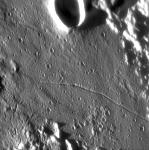 ESA Looks at Taruntius
ESA Looks at Taruntius
10.03.2004 | Lunnoe foto dnya
In the past large telescopes were commonly used to image the Moon. Edward Holden used the 36" Lick refractor to compile a lunar photographic atlas in the 1890s and Moore and Chappell acquired more great images from 1937 to 1947.
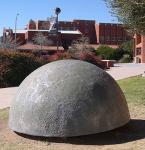 Half Moon in Tucson
Half Moon in Tucson
9.03.2004 | Lunnoe foto dnya
Lunar globes are rare and wonderful. At one time I had the small metal Replogle globe and I still possess a tiny NASA one plus my joy - a 12" Soviet-era globe that has unfortunately suffered plate tectonic ruptures from too many moves.
 Sunset over Clavius
Sunset over Clavius
8.03.2004 | Lunnoe foto dnya
In 1858 Julius Schmidt became the director of the Athens Observatory, and he is best known for the large (2 meter diameter) moon map that he published in 1878. However, one of his finest lunar images appeared in his small book, Der Mond, published 22 years earlier (Leipzig, 1856).
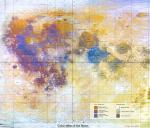 Color Moon Map
Color Moon Map
7.03.2004 | Lunnoe foto dnya
The Jan 28 LPOD astonished many observers with its detailed color rendition of the Full Moon. Now that imager, Filipe Alves, has used advanced computer manipulation to create a Mercator-like projection color image of the Moon - the first I know of. This is a level of sophistication that is new to amateur Moon mapping.
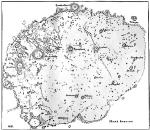 Goodacre's Imbrium
Goodacre's Imbrium
6.03.2004 | Lunnoe foto dnya
Goodacre's red volume The Moon is my favorite observer's guide to the Moon. The main reason is the 25 maps and assorted charts which are clear and uncluttered. Elger's 1895 The Moon also had wonderfully clear maps, but his Moon was shown in just four quadrant maps so little detail was depicted.
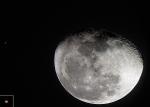 What's All The Excitement About Mars?
What's All The Excitement About Mars?
5.03.2004 | Lunnoe foto dnya
During the last year, bright Mars has performed numerous pirouettes with our Moon - approaching and even passing behind it at times. And well Mars should seek to hide, for the massive hype last summer...
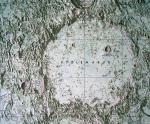 Ptolemaeus Peak Heights
Ptolemaeus Peak Heights
4.03.2004 | Lunnoe foto dnya
Lunar observers, long impressed by lengthy shadows of peaks, have often speculated on the their heights. Galileo used shadow lengths to estimate peaks heights, and Schroter, Madler and especially Schmidt determined a few thousand peak heights and crater depths this way. Shadow measurements at the telescope require great care, and are susceptible to systematic error.
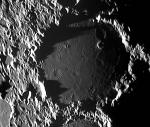 Ptolemaic Sunset
Ptolemaic Sunset
3.03.2004 | Lunnoe foto dnya
Ptolemy, the Greek astronomer, dominated medieval science, and his crater dominates the central region of the Earth-facing hemisphere of the Moon. Ptolemaeus, the Latinized version of the Greek name, is 153 km wide and 2.6 km deep. The rim is battered and a piece is missing on the west side.
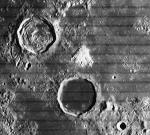 The Arrowhead
The Arrowhead
2.03.2004 | Lunnoe foto dnya
Lunar scientists don't always focus on the same objects as amateur observers. The latter group usually observes and images the same few dozen prominent features. The former group looks for anomalies that hint at unusual rock compositions or formation mechanisms.

